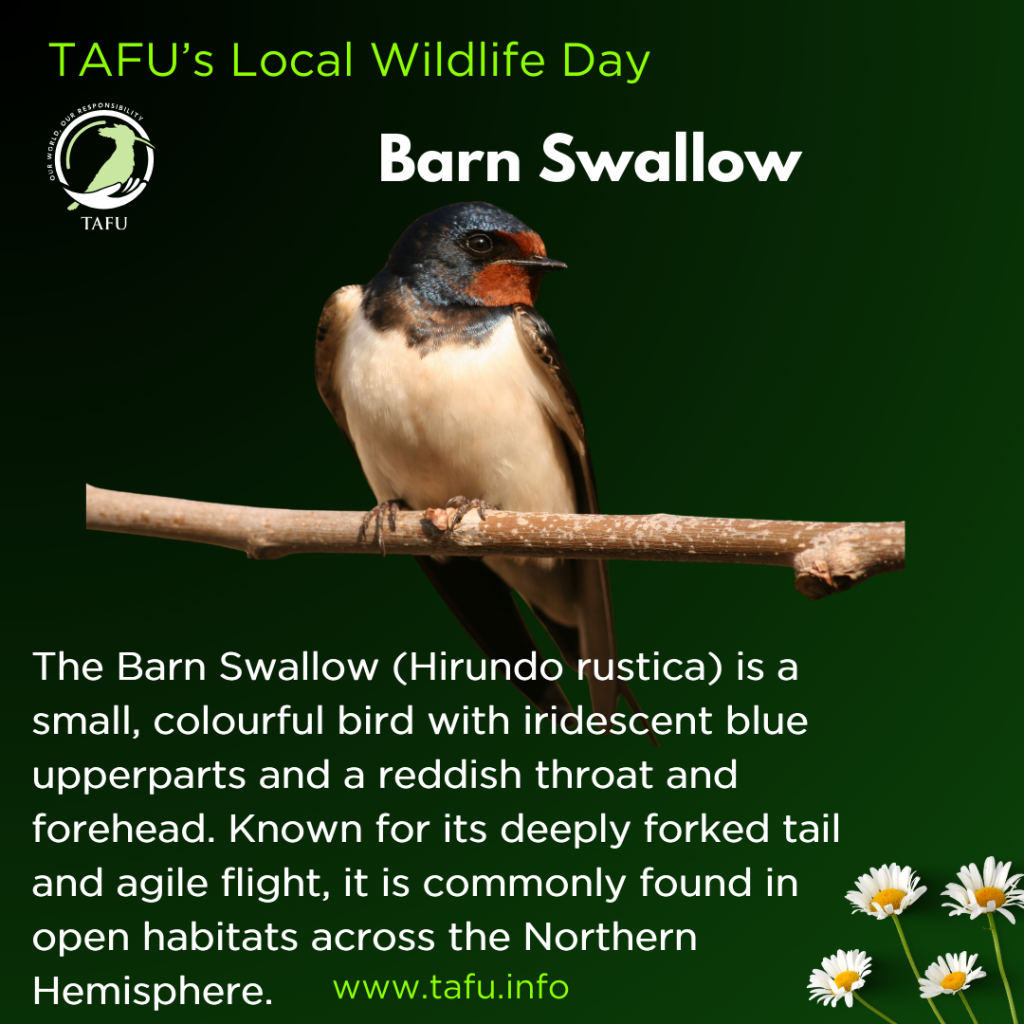Barn Swallow
As part of the countdown to TAFU’s Local Wildlife Day on the 11th of July – Species no. 28.
Stay tuned – 15 more days and 15 more species until then!
The Barn Swallow (Hirundo rustica) is a widely distributed passerine bird known for its striking appearance and agile flight. Adults typically measure 15-19 cm in length, with a wingspan of 32-35 cm. They have iridescent navy-blue upperparts, a reddish-brown forehead, throat, and chin, and a creamy-white underbelly. The long, deeply forked tail makes them easily recognisable.
Barn Swallows are highly adaptable and can be found in a variety of open habitats including fields, meadows, and wetlands. They are particularly associated with human settlements, often building their cup-shaped mud nests in barns, under eaves, bridges, and other structures. They feed almost exclusively on flying insects, which they catch in flight with impressive agility.
Their breeding range covers most of the Northern Hemisphere, and they migrate to the Southern Hemisphere for the winter, with populations wintering in Africa, Central & South America, as well as South Asia. Barn Swallows are known for their long migrations and can travel thousands of kilometers between breeding and wintering grounds.
The females usually lay two broods of 4-5 white eggs speckled with brown. Both parents share the duty of incubating the eggs, which lasts about 13-17 days. The parents are highly protective of their nest and will aggressively defend it from intruders.
Once hatched, the chicks are altricial, meaning they are born blind and featherless, requiring significant parental care. Both parents feed the chicks with a diet primarily consisting of insects. The chicks grow rapidly and fledge about 18-23 days after hatching. Even after fledging, the young birds continue to rely on their parents for food and protection for at least a week.
After the first brood fledges, the parents might start a second one if conditions are favourable. This high reproductive rate helps maintain their populations despite high predation and mortality rates among juveniles
Aiming to keep our green spaces as natural as possible and allowing mud puddles to form can help them gather nesting materials, and maintaining open habitats free from pesticides will help support their insect prey.

